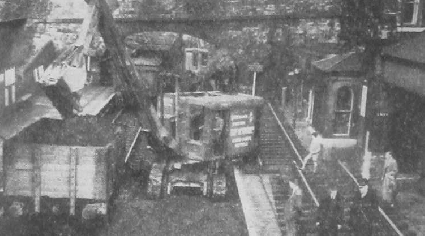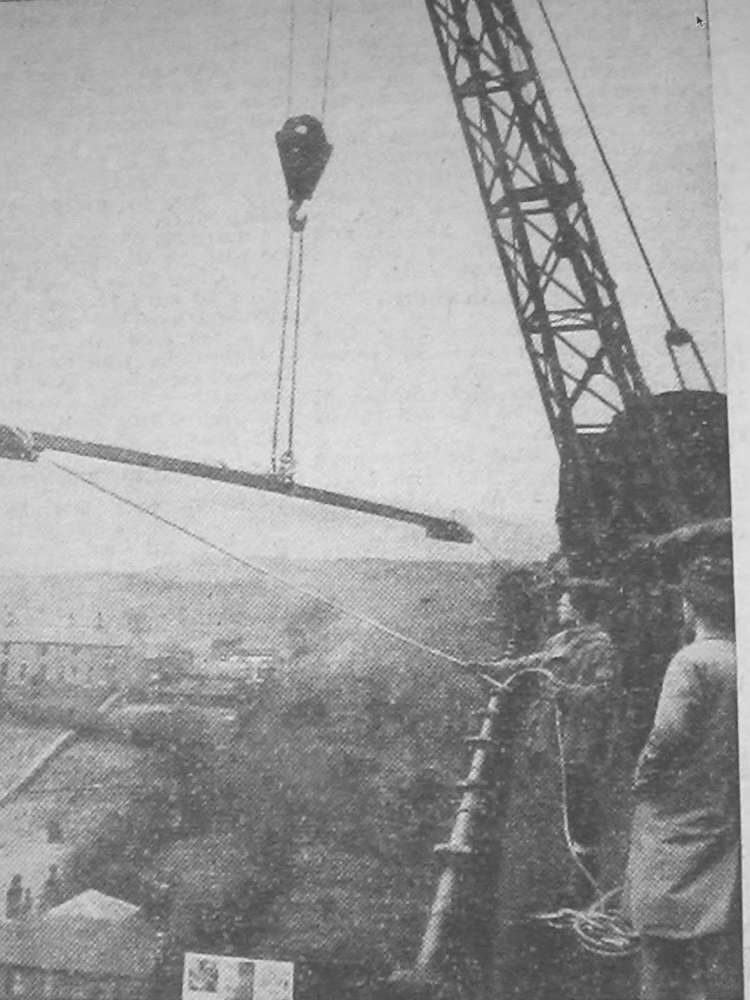
Pictures taken by a Glossop Chronicle photographer show a length of track at Broadbottom Station being dug up and tonnes of spoil dropped into a truck.
On the right, a British Rail employee with a head for heights swings a steel girder under the 107-foot-tall Dinting Arches.
The multi-million-pound operation to electrify the Manchester to Sheffield railway track was making a major impact in Broadbottom and Dinting.
The age of steam trains was slowly coming to an end and on a sunny Sunday in April 1950, a Chronicle news team was there to see the work needed to make that happen.
Cables to provide the electricity to power the planned new trains and overhead gantries to carry them had to be installed.
At Broadbottom, that meant the station shutting down while the track bed was lowered by 17 inches to provide the extra height required.

GOING UP: Steel girders are lifted into place on Dinting Arches
The operation involved 700ft of track in 14 sections being removed and temporarily piled on the platforms. This done, 3,000 tonnes of earth and ballast were dug out and dropped into one of 150 trucks to be taken for disposal further down the valley.
The final piece of the jigsaw would be relaying lines which would happen overnight using cranes, the only light coming from torches, ready for lines to re-open to traffic the following day.
The platforms would eventually be reconfigured to allow for the reduction in height.
Less than a mile away, construction workers were leaning perilously over three feet high railings on Dinting Arches, threading 29ft -long steel girders, swung there by a crane, under the track bed.
The Chronicle team spent one of the four Sundays the overall work at the Broadbottom and Dinting sites was to due to take, reporting on how a moment in history was being made.


 Fairfield Road’s Eco Warriors!
Fairfield Road’s Eco Warriors!
